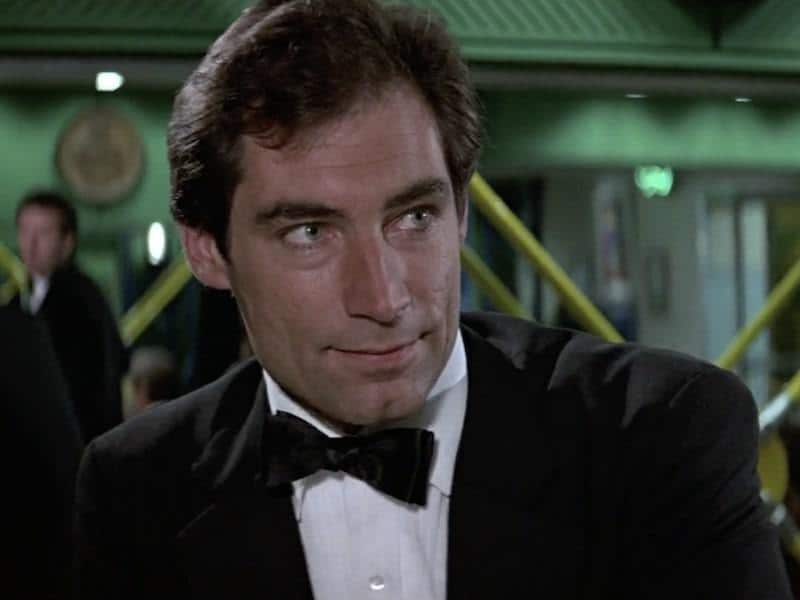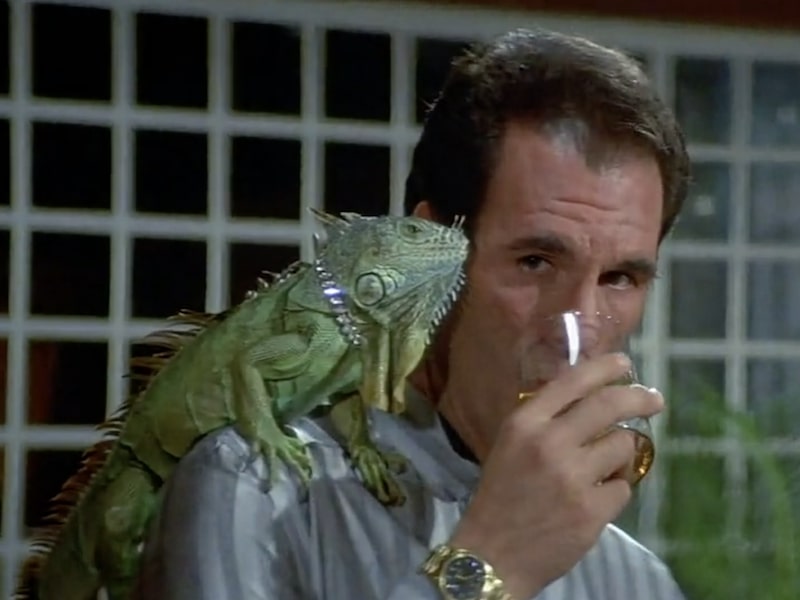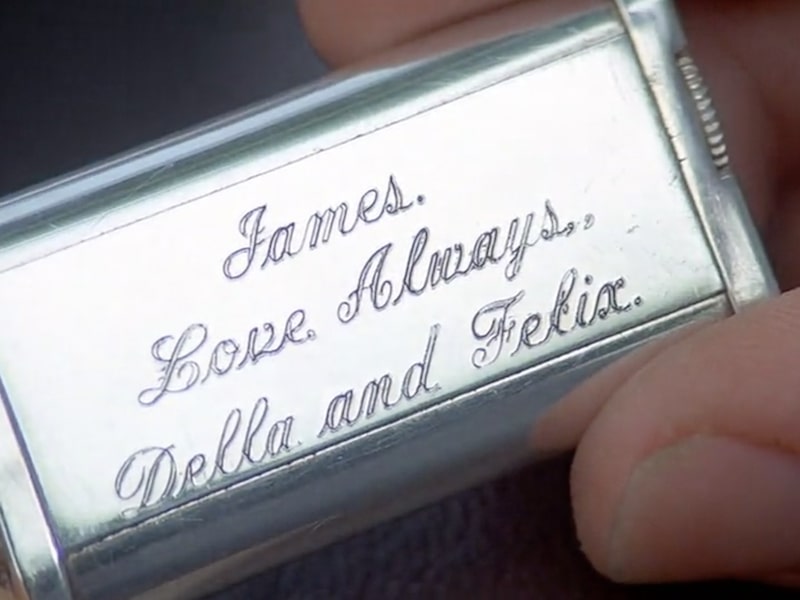

Are the villains effective?
Bond Beginner:
Where do I even begin? Jeroen Krabbé’s performance as General Georgi Koskov in The Living Daylights is absolutely inspired in that it answers the question “what if a Soviet turncoat was a muppet?” Joe Don Baker lampoons American war fetishism with the subtlety of a Verhoeven character. John Rhys-Davies’ General Pushkin is such a loveable caviar king that even the film can’t stay mad at him.
License to Kill is, likewise, a veritable goldmine of bad boys. Wayne Newton plays a handsy televangelist cult leader, Everett McGill is a treacherous DEA agent, Anthony Zerbe’s head explodes, and baby Benicio del Toro plays himself. Oh, right, and Franz Sanchez (Robert Davi) is the best Bond villain we’ve had so far. He’s a murderer first, drug dealer second — a sadist with principles accompanied by a diamond-clad iguana. That Bond’s plan involves befriending this madman is a real treat.
Bond Veteran:
Absolutely. With no campy antics to indulge in, these films have more room for plot and they wisely invest this time in good villains. I always need a second to remember exactly what’s going on with The Living Daylights and its villainous plot (opium, double-crossing, arms dealing, embezzlement — it’s a lot!). But I do buy into it, and it’s not so convoluted that it can’t be tracked. I also think Davi’s Sanchez is mean in a way that this franchise rarely sees. He’s genuinely cruel for cruelty’s sake. He’s a bold inclusion and it one-hundred-percent works.

Which film will you re-visit first?
Bond Beginner:
I can answer this easily because I could not wait to revisit these films. And, when I did, I automatically reached for License to Kill. To be clear: both of the Daltons slap. The Living Daylights offers a less glamorous take on East vs. West relations; it’s unromantic, fast-paced, and more critical of warmongering than I’ve come to expect from this franchise. But License pulls ahead in the race for a couple of reasons: it’s got a better villain, better emotional stakes, and a better Bond girl. Pam Bouvier isn’t just the best Bond girl of the Dalton era, she’s one of the best Bond girls, full stop.
License is like someone sat Bond, Scarface, and the Miami Vice boys at the same wedding table. It’s loud in all the right places and hits the emotional mark hinted at in The Living Daylights with Saunders. Namely: giving our invincible hero something, or rather someone, to lose. That it’s Felix, a character whose relationship with Bond has developed over almost four decades, packs all that more of a punch. After all: Felix is Bond’s boy. This isn’t a Bond film about global powers dick-waving with nukes or space ships. This is about Bond risking it all to visit justice on the man who hurt his friend. License pulls off a darker tone without taking itself too seriously. It’s pitch-perfect.
Bond Veteran:
Despite — or perhaps because of — The Living Daylights‘ clear competence and objective merits, I find it kinda dull. It’s well made and I completely get the appeal. There are some scenes that I really do enjoy (cello case sledding, obviously) but it’s not what I think of when I think of Bond. I miss the camp. License to Kill delivers a loud and chaotic action movie that gets dark while never being dreary. It has a sharp edge without sacrificing humor. I respect the hell out of it, and I’ll be back to it sooner or later.
Related Topics: Bondathon, Timothy Dalton


